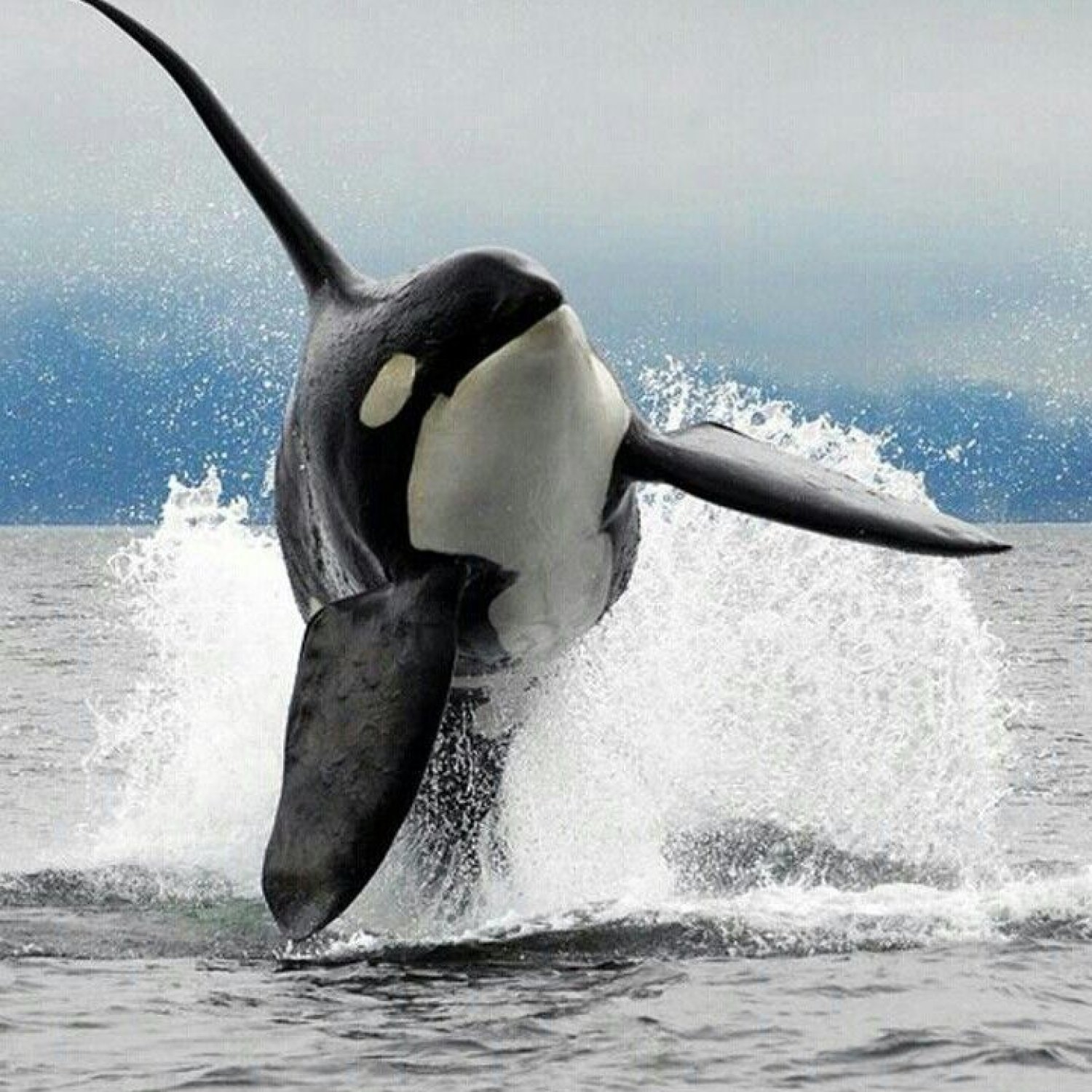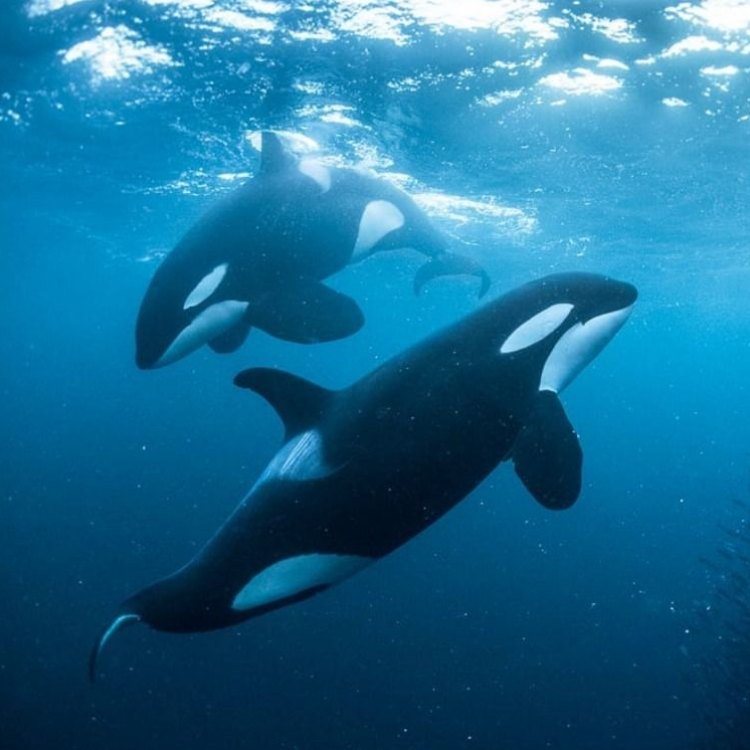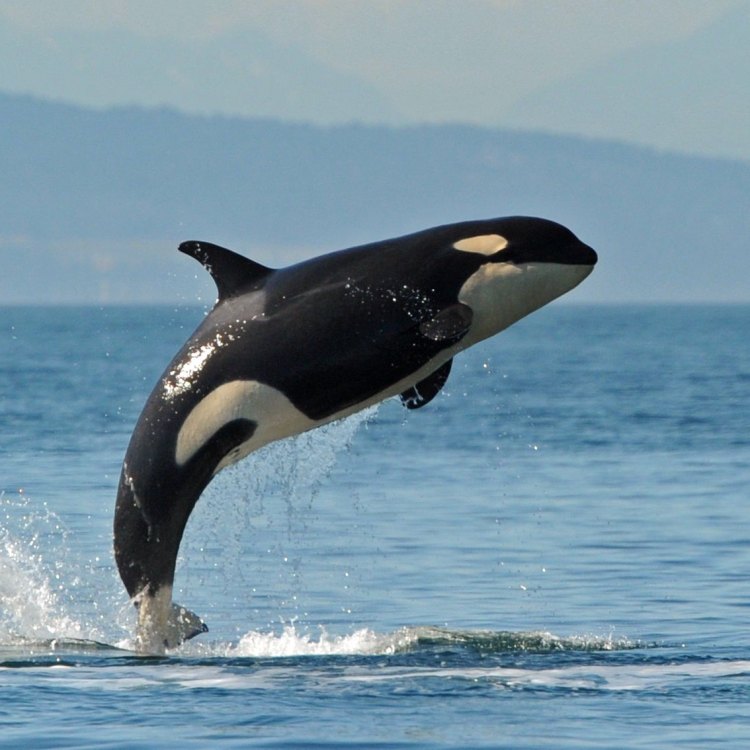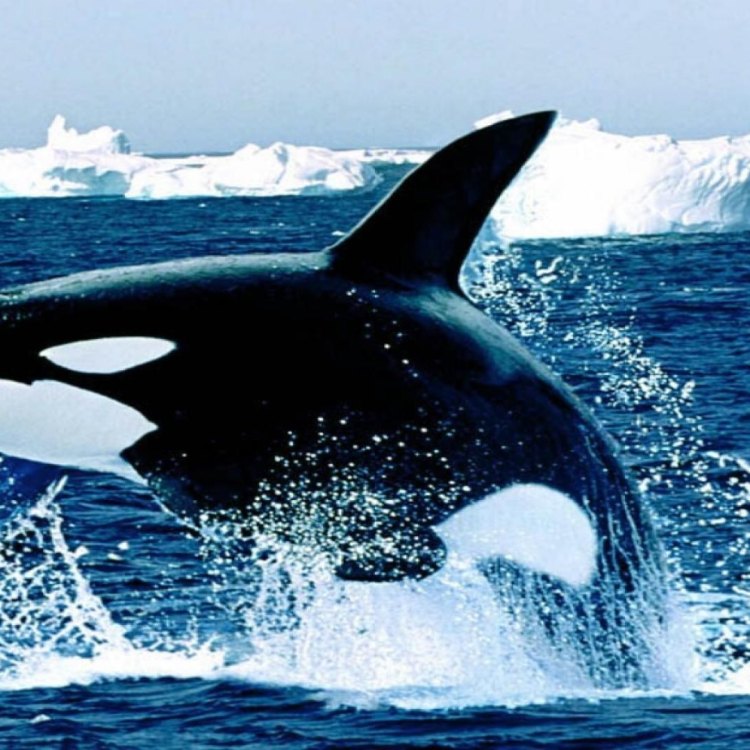
Killer Whale
Up to 32 feet
The Killer Whale, also known as the Orca, is a top predator in the ocean. Growing up to 32 feet in length, it belongs to the Delphinidae family with a streamlined and robust body shape. Found in various locations, its name alone indicates its powerful hunting abilities, making it a truly fascinating ocean creature. #KillerWhale #Orca #OceanPredator #FascinatingFacts
Animal Details Summary:
Common Name: Killer Whale
Kingdom: Animalia
Habitat: Marine
The Mighty and Mysterious Killer Whale: A Deep Dive into the Majestic Creature
For centuries, the vast oceans have been filled with countless fascinating creatures, from the tiniest of fish to the gargantuan blue whale. But among them, one stands out with its breathtaking beauty and unmatched power – the Killer Whale.Known by its scientific name Orcinus orca, this magnificent creature is commonly referred to as the Killer Whale due to its carnivorous feeding habits. While it may seem like a fierce predator, there is much more to these animals than what meets the eye Killer Whale. In this article, we will take a deeper look into the life of the Killer Whale, from its habitat to its behavior, and learn why it continues to captivate people all around the world.
A Member of the Cetacea Family
The Killer Whale belongs to the Kingdom Animalia, making it a true animal with specialized cells, tissues, and organs. It falls under the Phylum Chordata, which means it has a spinal cord, and the Class Mammalia, indicating that it is a warm-blooded animal that gives birth to live young.But what truly sets the Killer Whale apart is its place in the Order Cetacea. This order consists of marine mammals that spend their entire lives in the water, including dolphins, porpoises, and – of course – whales. Within this order, the Killer Whale belongs to the Family Delphinidae, which includes all dolphins and smaller whales.
From Ocean to Ocean: Habitat and Geographical Distribution
As a member of the Cetacea order, the Killer Whale is a creature of the ocean, making its home in the vast and deep waters of the marine habitat. These animals are found in oceans worldwide, from the frosty Arctic and Antarctic to the warmer temperate and tropical regions. They are also known to migrate seasonally between different habitats to follow food sources Khapra Beetle.While these animals are well-traveled and inhabit various areas, they are not particularly picky about their location. They can be found in both open ocean and coastal waters, and have even been spotted in some freshwater rivers. This adaptable nature and wide distribution play a significant role in the Killer Whale's survival and success as a species.
The Life of a Carnivorous Predator
With a name like "Killer Whale," it's no surprise that these marine mammals feed on other animals. But just how do they hunt and what do they eat?The Killer Whale is a top predator in the ocean, meaning it sits at the top of the food chain and has no natural predators. Its diet consists mainly of fish, including salmon, herring, and cod, but they also feed on other marine animals such as squid, seals, and even other dolphins and whales.
Like other dolphins and whales, Killer Whales use echolocation to hunt, emitting high-frequency sounds and listening for their echoes off potential prey. They also work together in groups, known as pods, to herd and trap their prey. These pods can range from a few individuals to over fifty, making them a formidable force in the ocean.
Black and White Beauties: Coloration and Physical Characteristics
One of the most iconic features of the Killer Whale is its distinct black and white coloration. The body is primarily black, with white patches along the belly, chin, and sides. These patterns are unique to each individual, allowing scientists and researchers to identify and track them in the wild.Apart from their striking coloration, Killer Whales have a distinct body shape that sets them apart from other cetaceans. They have a streamlined, robust body with a conspicuous dorsal fin on their back, and a set of pectoral flippers on their sides. They also have a powerful tail fluke, which they use for propulsion in the water.
A Monumental Size
Measuring up to 32 feet, the Killer Whale is undoubtedly an impressive and intimidating creature. But what's even more striking is their weight, which can reach a staggering 12,000 pounds. This size and strength are necessary for their hunting abilities, as well as their survival in the harsh ocean environment.While Killer Whales can vary in size depending on their location and sex, males are generally larger than females, with longer and more robust dorsal fins. These fins can reach up to six feet in height and can help scientists distinguish between males and females in the wild.
A Life of Intelligence and Social Bonds
Beyond their physical characteristics and feeding habits, there is much more to the life of the Killer Whale that leaves people in awe. These animals are highly intelligent and social creatures, living in complex social structures and forming strong bonds with their pod members.In each pod, there is a defined hierarchy, with a dominant female – known as the matriarch – leading the group. These animals also have a unique communication system, with distinct calls and vocalizations used for different purposes. They can also learn from one another and pass on information and hunting techniques within their pod.
Threats and Conservation Efforts
Despite their intelligent and powerful nature, Killer Whales are still at risk from various threats in their environment. Hunting and capture by humans, pollution, climate change, and overfishing all pose a significant danger to their survival as a species.Fortunately, there have been efforts to protect and conserve these magnificent creatures. In 1972, international regulations were established to protect the Killer Whale from hunting and captivity, and many countries have laws in place to protect their habitats and regulate human activities near orcas.
Continued Fascination and Inspiration
From their impressive size to their exceptional intelligence and social bonds, it's no wonder that Killer Whales continue to fascinate and inspire people worldwide. These mighty creatures have captured the attention and imagination of humans for centuries, and it's a fascination that shows no signs of fading.With increased awareness and conservation efforts, we can ensure that these amazing animals continue to thrive and amaze us with their beauty and power for generations to come. The Killer Whale is truly a wonder of the ocean, and a testament to the incredible diversity and adaptability of the animal kingdom.

Killer Whale
Animal Details Killer Whale - Scientific Name: Orcinus orca
- Category: Animals K
- Scientific Name: Orcinus orca
- Common Name: Killer Whale
- Kingdom: Animalia
- Phylum: Chordata
- Class: Mammalia
- Order: Cetacea
- Family: Delphinidae
- Habitat: Marine
- Feeding Method: Carnivorous
- Geographical Distribution: Oceans worldwide
- Country of Origin: N/A
- Location: N/A
- Animal Coloration: Black and white
- Body Shape: Streamlined and robust
- Length: Up to 32 feet

Killer Whale
- Adult Size: Up to 30,000 pounds
- Average Lifespan: Up to 90 years
- Reproduction: Sexual
- Reproductive Behavior: Both males and females are polygamous
- Sound or Call: Varied vocalizations and clicks
- Migration Pattern: Some populations migrate
- Social Groups: Live in matrilineal groups called pods
- Behavior: Highly intelligent and social
- Threats: Habitat degradation, pollution, climate change, and whaling
- Conservation Status: Data deficient
- Impact on Ecosystem: Apex predator
- Human Use: Tourism, captivity, and traditional hunting in some cultures
- Distinctive Features: Prominent dorsal fin and black and white coloration
- Interesting Facts: Killer whales are actually a type of dolphin
- Predator: No natural predator

Orcinus orca
The Killer Whale: An Apex Predator of the Ocean
The killer whale, also known as the orca, is one of the most fascinating and majestic creatures in the ocean. Its striking black and white coloration, fierce reputation, and highly intelligent and social behavior have captured the attention of humans for centuries. But there is so much more to these powerful creatures than meets the eye. In this article, we will delve into the unique features and characteristics of the killer whale, shedding light on its impact on the ecosystem and relationship with humans PeaceOfAnimals.Com.The adult size of a killer whale can range anywhere from 10,000 to a whopping 30,000 pounds, making it one of the largest predators in the ocean. Its body is sleek and streamlined, allowing it to move quickly through the water with agility and grace. Its average lifespan can reach up to 90 years, making it one of the longest-living mammal species on the planet. This impressive longevity is due to the fact that killer whales have no natural predators and therefore do not face significant threats from predation.
Reproduction in killer whales is sexual, with both males and females participating in the breeding process. However, killer whales are unique in that they exhibit polygamous reproductive behavior. This means that both males and females have multiple partners, leading to a varied and diverse genetic makeup within the population.
One of the most distinctive features of killer whales is their varied vocalizations and clicks. They use a combination of whistles, clicks, and calls to communicate with other members of their pod King Salmon. Each pod has its own unique dialect that is passed down from generation to generation, allowing them to distinguish between members of their own pod and those from other pods.
Some populations of killer whales are known to migrate, following food sources or for breeding purposes. However, not all populations engage in this behavior, and the migration patterns can vary greatly.
Killer whales live in highly complex and social groups known as pods. These pods are matrilineal, meaning that they are led by the oldest female in the group, and consist of her offspring and their offspring. This complex social structure allows for cooperation and communication within the pod, making them highly successful predators.
Speaking of successful predators, killer whales hold the title of being an apex predator in the ocean. This means that they are at the top of the food chain and have no natural predators. They have a diverse diet, feeding on fish, seals, and even other marine mammals such as dolphins and whales. Due to their highly intelligent and cooperative hunting techniques, they have earned the nickname "wolves of the sea."
However, despite their powerful and fierce reputation, killer whales face significant threats in their environment. Habitat degradation, pollution, and climate change are all taking a toll on their populations. In addition, killer whales have been subject to commercial whaling in the past, depleting their numbers in certain regions. These threats have led to the International Union for the Conservation of Nature (IUCN) listing the killer whale as "data deficient" in terms of their conservation status. This means that there is not enough data to accurately determine the exact population numbers and threats to the species.
Not only do killer whales impact the ocean as apex predators, but they also have a significant impact on human activities. Killer whales are heavily exploited for human use, notably in the tourism and entertainment industries. Their intelligence and striking appearance make them a popular attraction for tourists, and their captivity for entertainment purposes has been highly controversial. In some cultures, traditional hunting of killer whales still occurs, further contributing to their decline in certain regions.
One of the most interesting facts about killer whales is that they are actually a type of dolphin, not a whale. This may come as a surprise, considering their name and their reputation as powerful and imposing creatures. However, they are part of the delphinidae family, which includes all species of dolphins.
In conclusion, the killer whale is an apex predator of the ocean, with its distinctive features, highly intelligent behavior, and social structure. It faces numerous threats in its environment, but also has a significant impact on the ecosystem as an apex predator. As humans, it is important to recognize and respect these powerful creatures, and take steps to protect and preserve their populations for future generations to come.

The Mighty and Mysterious Killer Whale: A Deep Dive into the Majestic Creature
Disclaimer: The content provided is for informational purposes only. We cannot guarantee the accuracy of the information on this page 100%. All information provided here may change without prior notice.












